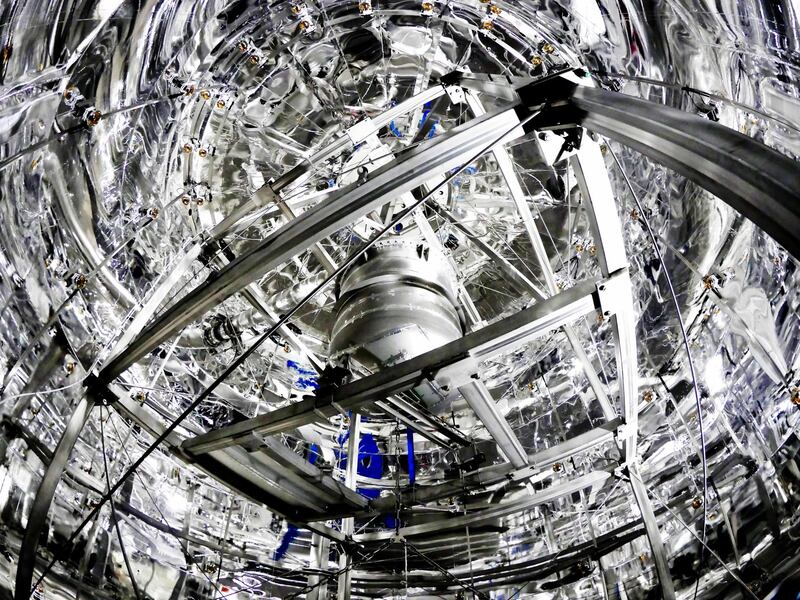Scientists in Abu Dhabi are celebrating their role in a mind-boggling achievement: detecting an event that typically occurs just once in 18,000 billion billion years.
That’s around a million million times longer than the age of the universe – and the rarest such event ever detected.
Based at NYU Abu Dhabi, the scientists are part of an international team that pulled off the feat during an experiment designed to detect dark matter, a mysterious substance thought to be lurking throughout the cosmos.
Despite making up most of the mass in the universe, the nature of dark matter remains unknown. In an attempt to find out, the team has built XENON1T, an underground detector in Italy consisting of a giant tank of liquid xenon.
Any dark matter particles passing through should hit the xenon atoms and trigger a response.
But along with ordinary xenon, the detector contains traces of a rare isotope known as Xe-124, whose atoms are predicted to be unstable and capable of triggering their own signals.
These events were expected to be rare, and now XENON1T has pinned down just how rare. In results published in the current issue of the journal Nature¸ the team has shown that Xe-124 atoms are indeed unstable – but on timescales far longer than the age of the universe.
To get around the problem of having to wait so long, the team exploited the fact that even staggeringly rare random events can happen if given enough opportunity.
In the case of xenon, while any one atom is very unlikely to decay over the course of a year, the chances soar if enough atoms are brought together.
Filled with over three tonnes of ordinary xenon, the detector contains around 10 million billion billion atoms of Xe-124. Even with an incredibly long lifetime, this huge number of atoms is virtually guaranteed to contain several hundred that decay over the course of a year.
Between 2016 and the end of last year, the team detected 126 decays – enough to pin down the lifetime of the average Xe-124 atom to 18,000 billion billion years.
The achievement is more than just an esoteric party-trick, however. It demonstrates that it’s possible to build a detector both big enough and sensitive enough to detect incredibly rare events – and screen out false alarms.
“This particular measurement shows its extraordinary performance and opens the door for other exciting measurements”, says NYU Abu Dhabi team leader professor Francesco Arneodo, who joined the university in 2013 after more than a decade working on the xenon project. “Plus, it shows that if anyone can detect dark matter, it must be us!”.
The team is now working to upgrade the detector to create XENONnT, which will be bigger, even better-protected from stray signals and around ten times more sensitive.
Whether it will succeed in its goal is far from clear, however. Similar experiments have so far found no sign of dark matter particles, despite operating for years.
This has sparked concern that the theory predicting the properties of the particles – known as supersymmetry – is fundamentally flawed.
Experiments at the giant Large Hadron Collider in Switzerland have so far failed to find any evidence to support supersymmetry, which predicts the likely mass of dark matter particles.
This has led some theorists to question the very existence of dark matter, and instead suggest that its apparent effects are due to some as-yet unexplained force affecting galaxies.
What the xenon experiment has done, however, is garner yet more evidence for the impermanence of things.
Since the discovery of radioactivity over a century ago, scientists have found that apparently stable building-blocks of matter decay eventually. In the 1970s, theorists predicted that even protons – found at the heart of every atom – should decay on timescales billions of times longer than that of Xe-124.
Yet despite decades of effort using the same trick as that used by the XENON1T team, no sign of proton decay has yet been seen.
As with dark matter, scientists can’t decide if their theories are wrong or if they just need to be more patient. Time will tell.
Robert Matthews is Visiting Professor of Science at Aston University, Birmingham, UK







